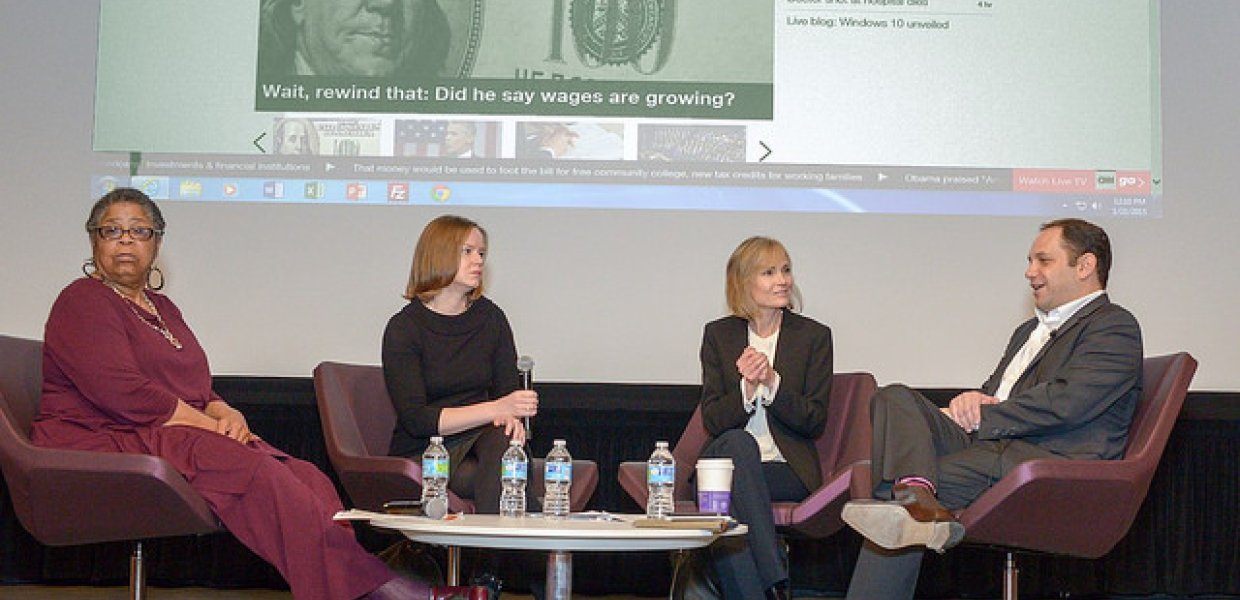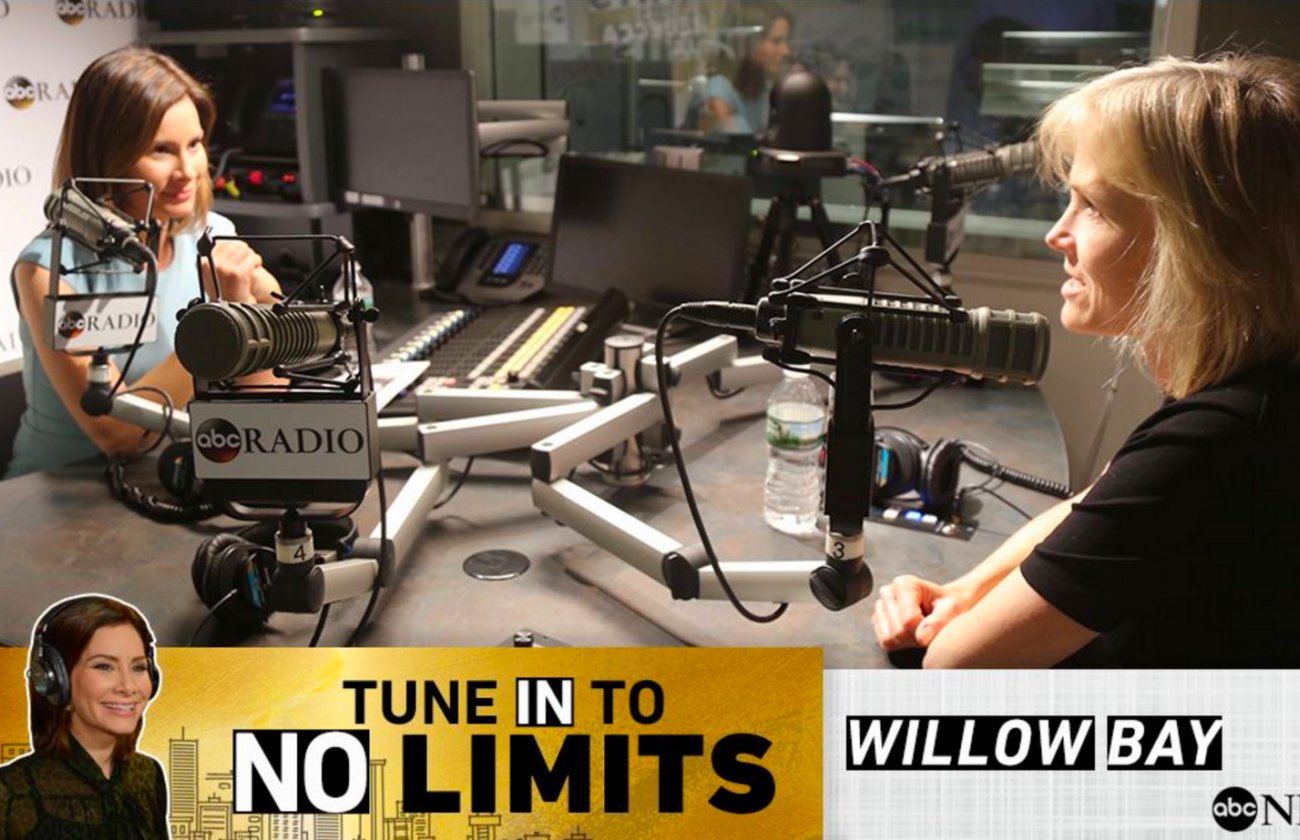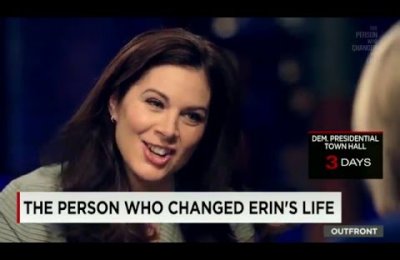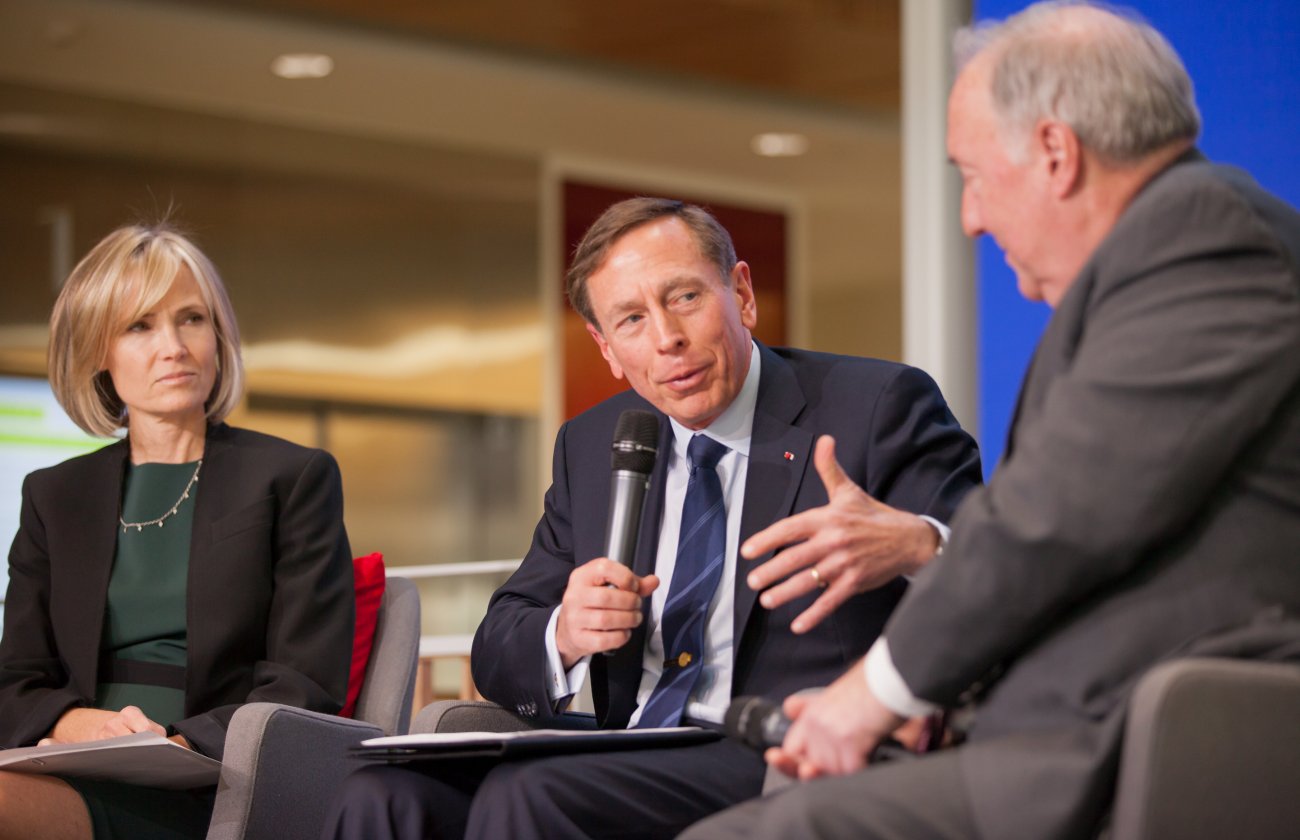 (left to right) USC Annenberg School for Communication and Journalism professor Erna Smith, CNN producer Wendy Brundige, Journalism School Director Willow Bay, and Senior VP for Editorial CNN, Andrew Morse at a journalism forum held on January 21, 2015 at Wallis Annenberg Hall. (Brett Van Ort/USC Annenberg)
(left to right) USC Annenberg School for Communication and Journalism professor Erna Smith, CNN producer Wendy Brundige, Journalism School Director Willow Bay, and Senior VP for Editorial CNN, Andrew Morse at a journalism forum held on January 21, 2015 at Wallis Annenberg Hall. (Brett Van Ort/USC Annenberg)
On Wednesday, Andrew Morse, Senior Vice President for Editorial CNN U.S., and Wendy Brundige, Supervising Producer at CNN and USC Annenberg alumna, joined journalism school director Willow Bay for a conversation about breaking news in the digital age in professor Erna Smith’s Journalism 201 class: History of News in Modern America. The in-depth discussion focused on how CNN tackled coverage of the social unrest seen in Ferguson, MO during the later half of 2014 as well as the recent attack on French satirical magazine Charlie Hebdo. The speakers also offered students advice on how to break into the evolving journalism world and stressed the importance of understanding how technology has changed the role of a journalist. Of Ferguson, Morse recalls sending CNN correspondent Sara Sidner into a challenging situation with “a lot of differing points of view” and “a lot of unknowns.” “In Ferguson--and certainly in the immediate aftermath--there wasn’t a great sense of safety,” Morse said. “[Uncertainty about] where the crowds would begin forming, where the police would begin deploying… It was really difficult at times to determine where was safe.” Leading up to the highly anticipated grand jury announcement of whether police officer Darren Wilson would face indictment for shooting and killing Michael Brown, an unarmed black teenager, Morse said CNN prepared for all possible scenarios. “Big news organizations plan it out almost like an army going to war,” Morse shared. “How do we prepare for--what I think everybody thought was inevitable--which was some sort of unrest on the streets? You have a plan A. You have a plan B. You hope for the best and you make real-time decisions.” Despite these preparations, CNN still received criticism for what some saw as too much focus on the impact Ferguson had on its reporters rather than focusing on the local community. For Morse and Brundige, such criticism highlights an underlying shift in the relationship between the news anchor, the news consumer and the news itself. “We are not immune to the fact that people are critical about that and, quite frankly, we take it seriously," Morse said. "The story should never be about ourselves. That said, I think if you look at some of the most compelling stories or storytellers--whether it is Diane Sawyer at ABC (who will go through a natural disaster area and bring you along with her better than anyone else in the business) or Anderson Cooper at [Hurricane] Katrina--they've changed the way we report in the field. [Cooper] was able, through his personal experience, to call out government incompetence. I don’t think you can report simply as unemotional observers anymore.” For Brundige, as more people turn to platforms like smartphones and tablets to get their news, there is a higher demand for an authentic voice from reporters. “I think it’s much more personal than it has ever been,” Brundige said. "The idea of the “voice of God” broadcaster that we used to have--that does not exist on the internet. It’s a one-on-one experience. So the people that are telling you what’s happening need to just be sharing it like they’re your friend. And that’s a hard thing to do.” If the question of safety played a large role in CNN’s thinking about its Ferguson coverage, this was doubly so as the organization grappled with whether to publish the contentious cartoons at the heart of the tragic incidents at Charlie Hebdo. While CNN ultimately decided to not run the cartoons out of fear that doing so might threaten the safety of journalists in CNN bureaus across the Middle East, Morse said it “was the single most difficult, biggest, complicated decision” he has made in the 25 years he has worked in journalism. The end of the discussion gave students an opportunity to ask Morse and Brundige for advice on getting their feet in journalism's door and keeping them there as well. Pushing back on the common fear that success is a matter of connections, Brundige reminded students that "you do know somebody because you’re at USC Annenberg. Take advantage of that and intern. Internships are how I got into the business. Be willing to work when other people don’t want to.” Morse shared that the key to success is to never give up. “Giving up is the biggest mistake. This is a really hard profession to break into. It just is,” Morse said. “There are a thousand reasons to talk yourself out of going into this field. So don’t give up.” For more images from this event, visit the USC Annenberg Flickr page.









